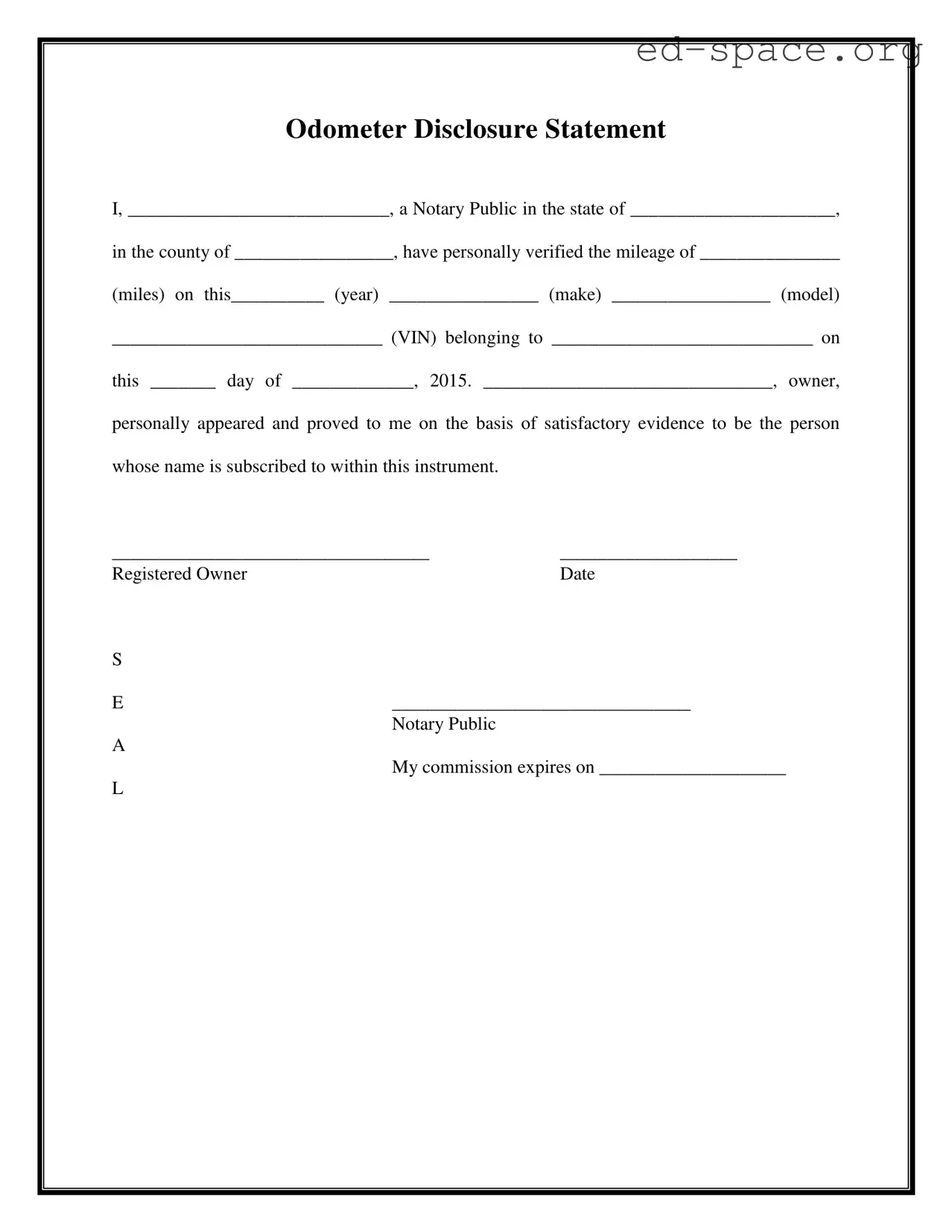What is a Notarized Odometer Statement?
A Notarized Odometer Statement is an official document that verifies the mileage of a vehicle at a specific point in time. This document is validated by a Notary Public to ensure authenticity. It serves as a reliable record for both buyers and sellers in the transfer of ownership, providing clear proof of the vehicle's mileage.
Why do I need to get the Odometer Statement notarized?
Getting the Odometer Statement notarized adds an extra layer of legality and trust to the document. It confirms that the parties signing the document are who they claim to be and that the information provided, particularly the odometer reading, is accurate. Notarization helps protect against fraud and ensures the transaction stands up to legal scrutiny.
Who needs to be present at the notarization of the Odometer Statement?
During the notarization of the Odometer Statement, both the vehicle's owner and the Notary Public need to be present. The owner is required to provide a valid form of identification for the notary to verify their identity. The Notary Public then witnesses the owner signing the document, thereby making it official.
What information do I need to provide for a Notarized Odometer Statement?
To complete a Notarized Odometer Statement, one must provide the vehicle's year, make, model, Vehicle Identification Number (VIN), and the current odometer reading. Additionally, the owner's personal information and signature are required. The Notary Public will fill out their section, including their seal and the expiration date of their commission.
How can I find a Notary Public for my Odometer Statement?
Finding a Notary Public can be relatively straightforward. They are often available at banks, legal offices, shipping stores, or through local or state government offices. Today, many services also offer mobile notaries who can come to you, or online notarization, depending on the laws of your state.
Is there a standard form for all states?
While the practice of disclosing odometer readings is federally mandated, specific requirements for the form may vary by state. It's important to check with your local Department of Motor Vehicles (DMV) or equivalent agency to ensure you are using the correct form and following state-specific procedures.
What happens if I don't get an Odometer Statement when buying a vehicle?
Skipping the process of obtaining a notarized Odometer Statement can lead to significant issues down the line. It opens the door to odometer fraud, making it difficult to prove if the mileage was tampered with after purchase. This could affect the vehicle's value, lead to legal complications, and potentially invalidate certain warranties or insurance claims.
Can an Odometer Statement be corrected if a mistake is made?
Yes, corrections are possible, but it's best to avoid errors in the first place. If a mistake is made, a new Odometer Disclosure Statement should be filled out correctly and re-notarized. Both the buyer and seller should keep copies of both the initial and corrected documents for their records to prevent any future disputes or misunderstandings.

